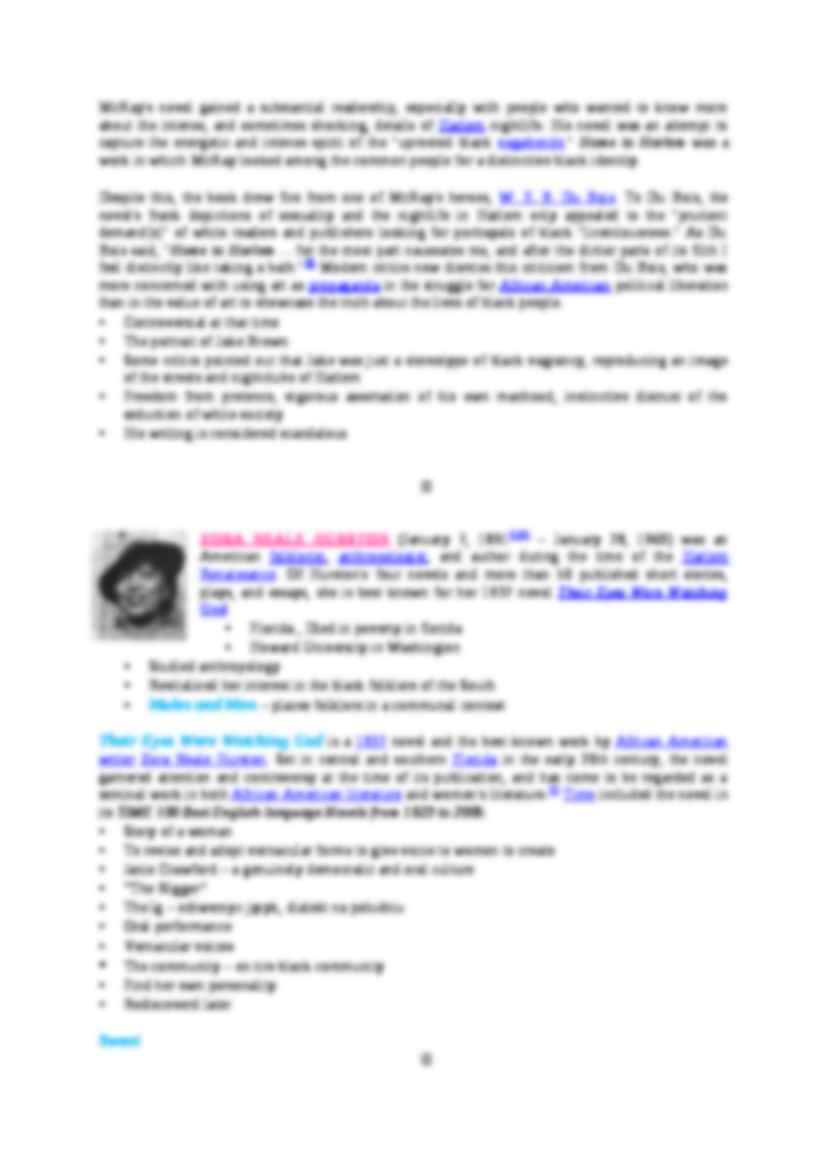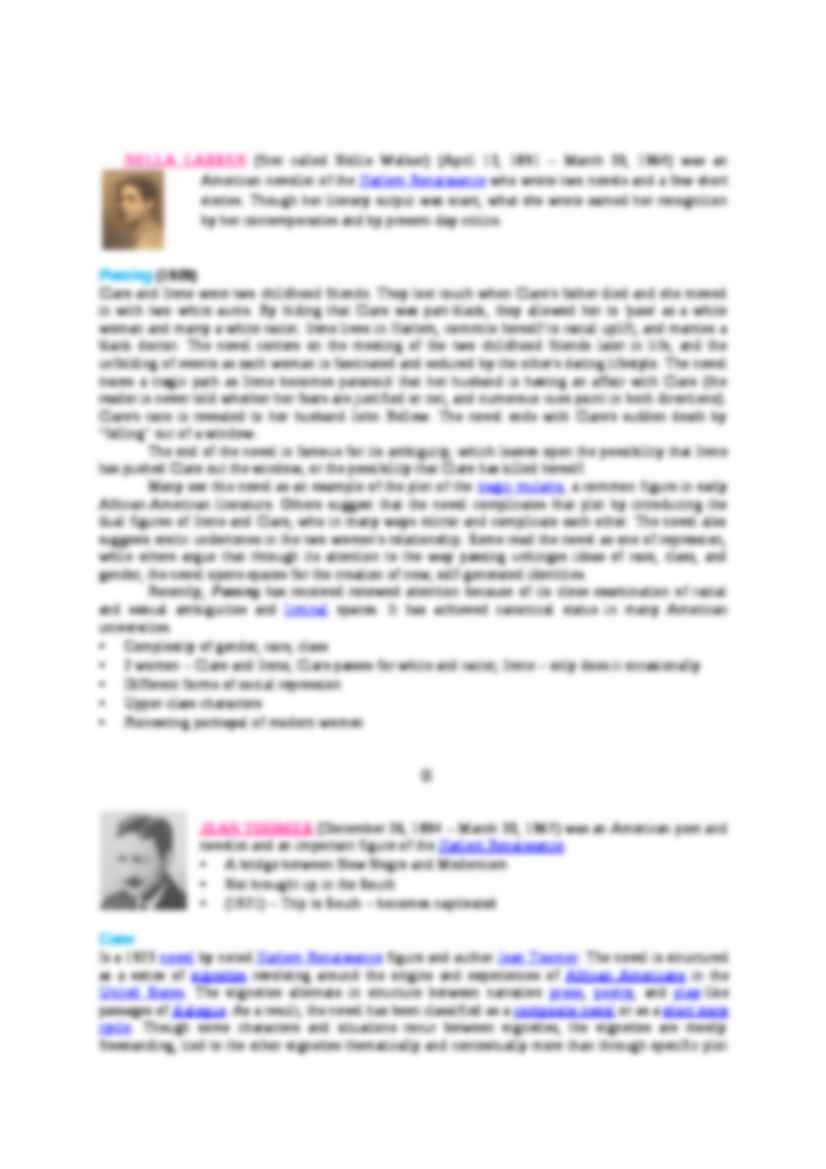To tylko jedna z 4 stron tej notatki. Zaloguj się aby zobaczyć ten dokument.
Zobacz
całą notatkę



Harlem Renaissance the Harlem Renaissance (1919-1930s) a movement in African-American culture in the 1920s which began in the New York district of Harlem. Achievements were made in literature, music, art and the theatre. Among the writers involved were Countee Cullen, Jean Toomer and Zora Neale Hurston, and the musicians included `Duke' Ellington. The movement ended with the Great Depression.
First time African Americans attract attention from white audience
Bck Great Migration - South - North
Harlem - cultural and socio-political center of clubs, jazz, blues
Turning point - publication of The New Negro by Alain Locke (an American writer, philosopher, educator, and patron of the arts. He is best known for his writings on and about the Harlem Renaissance. He is regarded as the "Father of the Harlem Renaissance".[2] His philosophy served as a strong motivating force in keeping the energy and passion of the Movement at the forefront.) - publication - a catalyst for a growing sense of confidence that black America was on the verge of second emancipation
The term “new negro”
2 sections “The Negro Renaissance”
“The New Negro in a New World”
Claude McKay (September 15, 1889[1]- May 22, 1948) was a Jamaican-American writer and poet. He was a seminal figure in the Harlem Renaissance and wrote three novels: Home to Harlem (1928), a best-seller which won the Harmon Gold Award for Literature, Banjo (1929), and Banana Bottom (1933). McKay also authored a collection of short stories, Gingertown (1932), and two autobiographical books, A Long Way from Home (1937) and Harlem: Negro Metropolis (1940). His book of poetry, Harlem Shadows (1922) was among the first books published during the Harlem Renaissance. His book of collected poems, Selected Poems (1953), was published posthumously. McKay was attracted to communism in his early life, but he was never a member of the Communist Party. McKay was a substantial figure who emerged as one of the first and most militant voices of the Harlem Renaissance. He was regarded as one of the first major poets of the movement. Some of his most famous poems during that period were the militant If We Must Die (1919) and his self portrait Outcast, which was collected in Harlem Shadows (1922). McKay also wrote lyrics reminiscent of his Jamaican homeland and works about love and exile, such as the Tropics in New York and Harlem Dancer. The tone for many of his works have been described as race-conscious and revolutionary. He was an advocate for full civil liberties and racial solidarity. McKay's pride in his culture and racial awareness helped stimulate expression in African American literacy.
Born in Jamaica
Militant - “If we must die”
(…)
…, who in many ways mirror and complicate each other. The novel also suggests erotic undertones in the two women's relationship. Some read the novel as one of repression, while others argue that through its attention to the way passing unhinges ideas of race, class, and gender, the novel opens spaces for the creation of new, self-generated identities.
Recently, Passing has received renewed attention…
… American life
Jazz - challenging, the best way of capturing African American life
Blues - describing sorrow
Express openly
I Too - the echo of Song of Myself
The Negro Speaks of Rivers
…
... zobacz całą notatkę






Komentarze użytkowników (0)